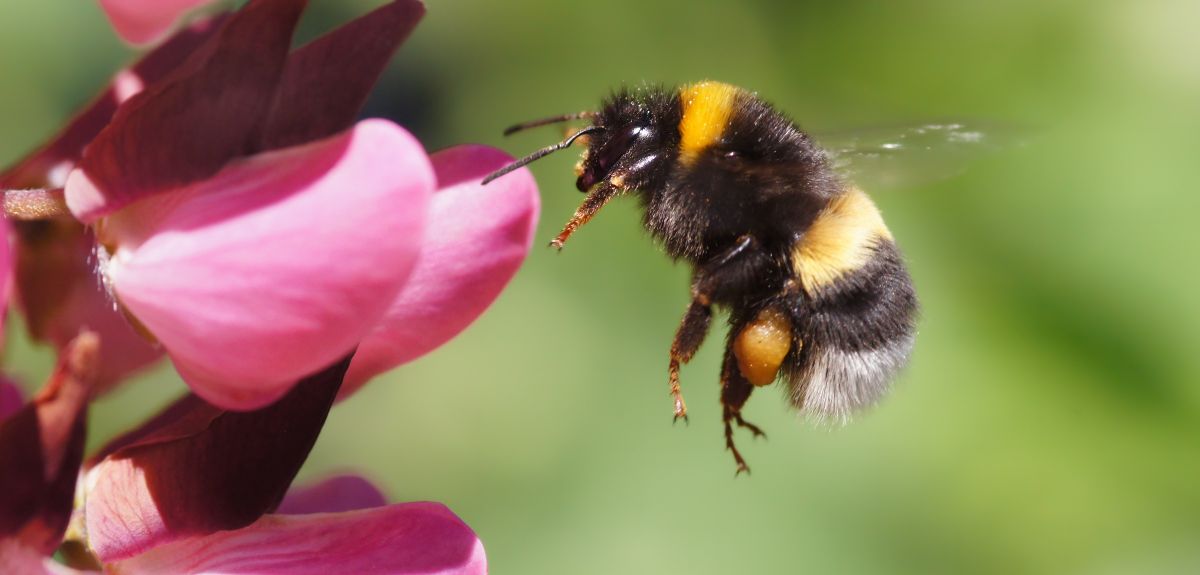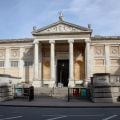
New study shows how bumblebees make decisions ‘on the fly’ to maximise energy returns
If you have ever watched a bumblebee move from flower to flower, you might wonder how they decide which flower to choose and how long to remain on it. A new research study led by the University of Oxford has demonstrated that bumblebees make choices while foraging to maximize the rate of energy return, i.e. the amount of nectar sugar collected each minute. The findings have been published in the journal iScience.
It is amazing that, even with a relatively simple brain, bumblebees are able to make such complex energetic decisions. We found that bumblebees optimise their foraging behaviour in a way which suggests they are constantly evaluating not just the quality of nectar reward they are collecting, but also the time it takes to collect it.
Dr Jonathan Pattrick (Department of Biology, University of Oxford)
First author of the study Dr Jonathan Pattrick (Department of Biology, University of Oxford) said: ‘Understanding how bees make foraging decisions could be used to make predictions about the sorts of flowers the bees are likely to be visiting. In turn, this could inform choices of the flowers to plant in field margins and is also relevant to crop breeders who want to make varieties which are “better” for bumblebees.’
To investigate how bumblebees decide which flowers to interact with, Pattrick and his colleagues used an innovative approach which involved training the bees to visit vertically and horizontally oriented slippery-surfaced artificial flowers. The flowers contained different “nectars” with high, medium, or low amounts of sugar, and were designed to test whether bumblebees could make a trade-off between the difficulty in handling a particular flower and its nectar sugar concentration.
A custom computer program was used to measure the split-second timing of bumblebee behaviour as they decided whether to collect high-sugar nectar from slippery flowers, which required them to expend energy hovering, or lower-sugar nectar from flowers on which they could land. Overall, they captured over 60,000 separate behavioural observations, allowing them to precisely estimate foraging energetics. Earlier studies on bumblebee foraging currencies had been primarily observational, making it difficult to distinguish bumblebees’ critical currency.
The data clearly showed that bumblebees chose flowers that were either hard to handle or had a low concentration of sugar, depending on which would provide the highest return for a certain amount of time spent foraging. Their decisions fit with a model in which their critical currency is the rate of energy return as opposed to energetic efficiency (minimising the amount of energy spent for any energy gained during foraging), the researchers report.
Bombus terrestris bumblebees are one of the most commercially important pollinators in Europe. By better understanding how foraging energetics influences their choices on which flowers to visit, this can help inform decisions on how bumblebees are used to pollinate crops.
Dr Jonathan Pattrick (Department of Biology, University of Oxford)
In other words, bumblebees choose nectar sources that maximize their immediate return of sugar to the colony, instead of optimizing the energy efficiency of their foraging. This result is different to earlier findings in honeybees, which show that honeybees maximize energy efficiency instead.
Dr Jonathan Pattrick added: ‘Bumblebees have a different lifestyle to honeybees: they only store a very small amount of nectar in the nest and so have to make the most of every available opportunity to forage. This difference between species may be why the bumblebees adopt a strategy such that their foraging is of more immediate benefit to the colony, even if it means they have to work harder, while honeybees take a relatively more measured approach to how hard they work – this should prolong their working lifespan.’
According to Dr Pattrick, future work should investigate whether bumblebees consistently use this currency, even when the foraging context changes.
‘In the UK, wild bumblebees are under threat and have declined over the past century. It is important to understand their biology and behaviour if we want to conserve these charismatic species. Resolving the currency through which bumblebees make their foraging decisions is one additional piece of this complex story.’
The study ‘Bumblebees negotiate a trade-off between nectar quality and floral biomechanics’ has been published in iScience.
 Largest ever UK study reveals stark ethnic and social inequalities in lung cancer diagnosis
Largest ever UK study reveals stark ethnic and social inequalities in lung cancer diagnosis
 Oxford’s gargoyles come to life in new Extended Reality (XR) interactive experience
Oxford’s gargoyles come to life in new Extended Reality (XR) interactive experience
 Treating bullying as everyone’s problem reduces incidence in primary schools
Treating bullying as everyone’s problem reduces incidence in primary schools
 Oxford's Ashmolean Museum saves Fra Angelico masterpiece to go on public display from December
Oxford's Ashmolean Museum saves Fra Angelico masterpiece to go on public display from December
 New, ARIA-backed project aims to unlock radically cheaper AI hardware
New, ARIA-backed project aims to unlock radically cheaper AI hardware